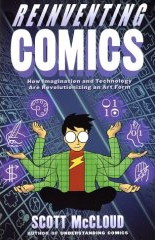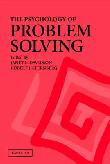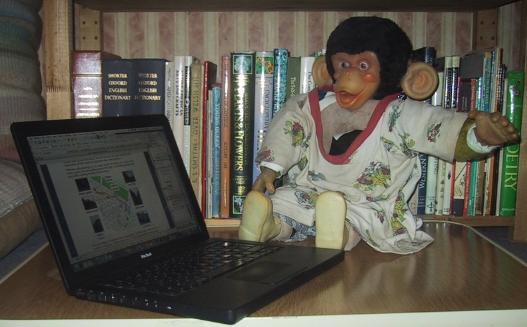If life is always a learning opportunity, then so are dreams.
Last night I both learnt something new about language and cognition, and also developed a new trick for creativity!
In the dream in question I was in a meeting. I know, a sad topic for a dream, and perhaps even sadder it had started with me filling in forms! The meeting was clearly one after I’d given a talk somewhere as a person across the table said she’d been wanting to ask me (obviously as a sort of challenge) if there was a relation between … and here I’ll expand later … something like evolutionary and ecological something. Ever one to think on my feet I said something like “that’s an interesting question”, but it was also clear that the question arose partly because the terms sounded somewhat similar, so had some of the sense of a rhyming riddle “what’s the difference between a jeweller and a jailor”. So I went on to mention random metaphors as a general creativity technique and then, so as to give practical advice, suggested choosing two words next to each other in a dictionary and then trying to link them.
Starting with the last of these, the two words in a dictionary method is one I have never suggested to anyone before, not even thought about. It was clearly prompted by the specific example where the words had an alliterative nature, and so was a sensible generalisation, and after I woke realised was worth suggesting in future as an exercise. But it was entirely novel to me, I had effectively done the exactly sort of thinking / problem solving that I would have done in the real life situation, but while dreaming.
One of the reasons I find dreams fascinating is that in some ways they are so normal — we clearly have no or little sensory input, and certain parts of our brain shut down (e.g. motor control to stop us thrashing about too much in our sleep) — but other parts seem to function perfectly as normal. I have written before about the cognitive nature of dreams (including maybe how to model dreaming) and what we may be able to learn about cognitive function because not everything is working, rather like running an engine when it is out of the car.
In this dream clearly the ‘conscious’ (I know an oxymoron) problem-solving part of the mind was operating just the same as when awake. Which is an interesting fact about dreaming, but I was already aware of it from previous dreams.
In this dream it was the language that was interesting, the original conundrum I was given. The problem came as I woke up and tried to reconstruct exactly what my interlocutor had asked me. The words clearly *meant* evolutionary and ecological, but in the dream had ‘sounded’ even closer aurally, more like evolution and elocution (interesting to consider, images of God speaking forth creation).
So how had the two words sound more similar in my dream than in real speech?
For this we need the Jabberwocky circuit.
There is a certain neurological condition that arises, I think due to tumours or damage in particular areas of the grain, which disrupts particular functions of language. The person speaks interminably; the words make sense and the grammar is flawless, but there is no overall sense. Each small snippet of speech is fine, just there is no larger scale linkage.
When explaining this phenomenon to people I often evoke the Jabberwocky circuit. Now I should note that this is not a word used by linguists, neurolinguists, or cognitive scientists, and is a gross simplification, but I think captures the essence of what is happening. Basically there is a part of your mind (the conscious, thinking bit) that knows what to say and it asks another bit, the Jabberwocky circuit, to actually articulate the words. The Jabberwocky circuit knows about the sound form of words and how to string them together grammatically, but basically does what it is told. The thinking bit needs to know enough about what can be said, but doesn’t have time to deal with precisely how they are strung together and leaves that to Jabberwocky.
Even without brain damage we can see occasional slips in this process. For example, if you are talking to someone (and even more if typing) and there is some other speech audible (maybe radio in the background), occasionally a word intrudes into your own speech that isn’t part of what you meant to say, but is linked to the background intruding sound.
Occasionally too, you find yourself stopping in mid sentence when the words don’t quite make sense, for example, when what would be reasonable grammar overlaps with a colloquialism, so that it no longer makes sense. Or you may simply not be able to say a word that you ‘know’ is there and insert “thingy” or “what’s it called” where you should say “spanner”.
The relationship between the two is rather like a manager and someone doing the job: the manager knows pretty much what is possible and can give general directions, but the person doing the job knows the details. Occasionally, the instructions get confused (when there is intruding background speech) or the manager thinks something is possible which turns out not to be.
Going back to the dream I thought I ‘heard’ the words, but examining more closely after I woke I realised that no word would actually fit. I think what is happening is that during dreaming (and maybe during imagined dialogue while awake), the Jabberwocky circuit is not active, or not being attended to. It is like I am hearing the intentions to speak of the other person, not articulated words. The pre-Jabberwocky bit of the mind does know that there are two words, and knows what they *mean*. It also knows that they sound rather similar at the beginning (“eco”, “evo”), but not exactly what they sound like throughout.
I have noticed a similar thing with the written word. Often in dreams I am reading a book, sheet of paper or poster, and the words make sense, but if I try to look more closely at the precise written form of the text, I cannot focus, and indeed often wake at that point. That is the dream is creating the interpretation of the text, but not the actual sensory form, although if asked I would normally say that I had ‘seen’ the words on the page in the dream, it is more that I ‘see’ that there are words.
Fiona does claim to be able to see actual letters in dreams, so maybe it is possible to recreate more precise sensory images, or maybe this is just the difference between simply writing and reading, and more conscious spelling-out or attending to words, as in the well known:
Paris in the
the spring
Anyway, I am awake now and the wiser. I know a little more about dreaming, which cognitive functions are working and which are not; I know a little more about the brain and language; and I know a new creativity technique.
Not bad for a night in bed.
What do you learn from your dreams?
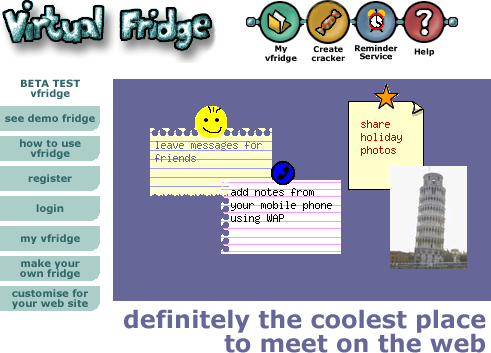
 The core idea of vfridge is placing small notes, photos and ‘magnets’ in a shareable web area that can be moved around and arranged like you might with notes held by magnets to a fridge door.
The core idea of vfridge is placing small notes, photos and ‘magnets’ in a shareable web area that can be moved around and arranged like you might with notes held by magnets to a fridge door.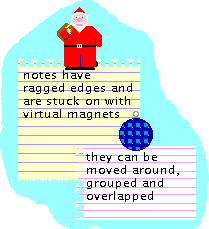 Just over a year ago I thought it would be good to write a retrospective about vfridge in the light of the social networking revolution. We did a poster “
Just over a year ago I thought it would be good to write a retrospective about vfridge in the light of the social networking revolution. We did a poster “


